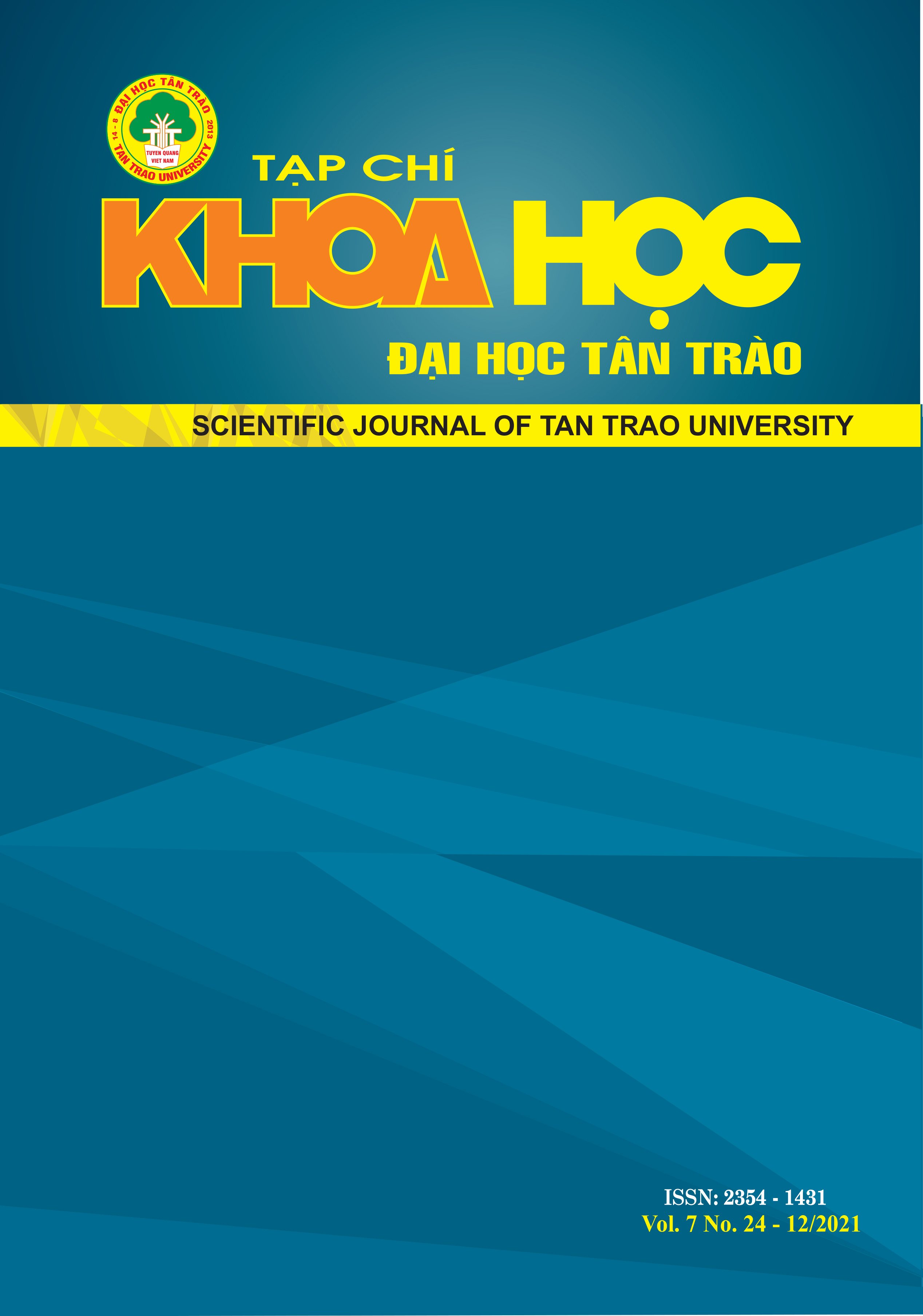LAND SUITABILITY ASSESSMENT OF RICE CULTIVATION USING GIS IN VO NHAI, THAI NGUYEN, VIETNAM.
DOI:
https://doi.org/10.51453/2354-1431/2021/686Abstract
Vo Nhai is a moutainous district in Thai Nguyen, has complicated topography with population is almost of minority ethnics. The famers cultivate rice in the small plots, traditional practices and lack of consideration about the suitable factors leading to get low yield and rice quality. It is very important to choose suitable land for rice production in order to improve yield, quality and ensure food security. In this study, we used GIS associate with multi-criteria assessment to construct the suitable map for rice production for Vo Nhai District. Acording to FAO 1976 [4], we chosen 4 factors (temperature, rainfall, slope, soil type) that’s are deeply affected rice cultivation. The result of this study, there were 4,215 (ha) highly suitable area (S1) for rice production (5% total area Vo Nhai), 43,777(ha) moderately suitable area (S2) for rice production (52.1% total area Vo Nhai) and 36,068(ha) marginally suitable area (S3) for rice production (42.9 % total area Vo Nhai).
Downloads
References
[1] Ahamed T.R., Gopal Rao K., Murthy J.S.R. (2000) GIS-based fuzzy membership model for crop-land suitability analysis. Agr Syst 63(2):75–95.
[2] Eckert J, Shetty S (2011) Food systems, planning and quantifying access: using GIS to plan for food retail. Appl Geogr 31(4):12161223.https://doi. org/10.1016/j.apgeog.2011.01.011
[3] FAO (1976), A Framework for Land Evaluation, Soil bulletin 32, ed, FAO, Rome.
[4] FAO (2016) Available online: http://www.fao.org/ home/en (accessed on 15 September 2016).
[5] Gatrell J.D., Reid N., Ross P. (2011) Local food systems, deserts, and maps: the spatial dynamics and policy implications of food geography. Appl Geogr 31(4):1195–1196. https://doi.org/10.1016/j.apgeog. 2011.01.013
[6] Geohive, (2014)—Historic, Current And Future |85 No.24_December 2021 |p.6-13 Population: Asia. Available online: http://www. geohive.com/earth/his_proj_asia.aspx. (Accessed on 2 November 2014).
[7] Moore, Jeffrey H. Weatherford, Larry R., (2001), Decision Modeling with Microsoft Excel, 6th edition. Prentice-Hall, Inc.: Upper Saddle River, p. 12-26
[8] Krishnan P, Ramakrishnan B, Reddy Kr, Reddy V. (2011). High temperature effects on rice growth, yield, and grain quality. Adv Agron. 111:87-205.
[9] Mustafa A.A., Man S., Sahoo R.N, Nayan A, Manoj K., Sarangi A., Mishra AK (2011) Land suitability analysis for different crops. A multi criteria decision making approach using remote sensing and GIS. Indian Agricultural Research Institute, New Delhi-110 012.
[10] Purevdorj M; Kubo M., (2005).The future of rice production, consumption and seaborne trade: Synthetic prediction method. Journal of Food Distribution Research, 36 (1): 250- 259.
[11] Prakash T.N. (2003). Land Suitability Analysis for Agricultural Crops A Fuzzy Multicriteria Decision Making Approach. The Netherlands: International Institute for Geo-information Science and Earth observation Enschede; pp. 6–13. (2).
[12] Render, Barry. Stair Jr, Ralph M. (2000) Quantitative Analysis for Management, 7th edition. Prentice-Hall, Inc: Upper Saddle River, p 522-529.
[13] Saaty (1989) Group decision making and the AHP. In: Golden BL, Wasil EA, Harker PT (eds) The analytic hierarchy process. Springer, Berlin, Heidelberg.
Downloads
Published
How to Cite
Issue
Section
License

This work is licensed under a Creative Commons Attribution-ShareAlike 4.0 International License.
All articles published in SJTTU are licensed under a Creative Commons Attribution-ShareAlike 4.0 International (CC BY-SA) license. This means anyone is free to copy, transform, or redistribute articles for any lawful purpose in any medium, provided they give appropriate attribution to the original author(s) and SJTTU, link to the license, indicate if changes were made, and redistribute any derivative work under the same license.
Copyright on articles is retained by the respective author(s), without restrictions. A non-exclusive license is granted to SJTTU to publish the article and identify itself as its original publisher, along with the commercial right to include the article in a hardcopy issue for sale to libraries and individuals.
Although the conditions of the CC BY-SA license don't apply to authors (as the copyright holder of your article, you have no restrictions on your rights), by submitting to SJTTU, authors recognize the rights of readers, and must grant any third party the right to use their article to the extent provided by the license.


